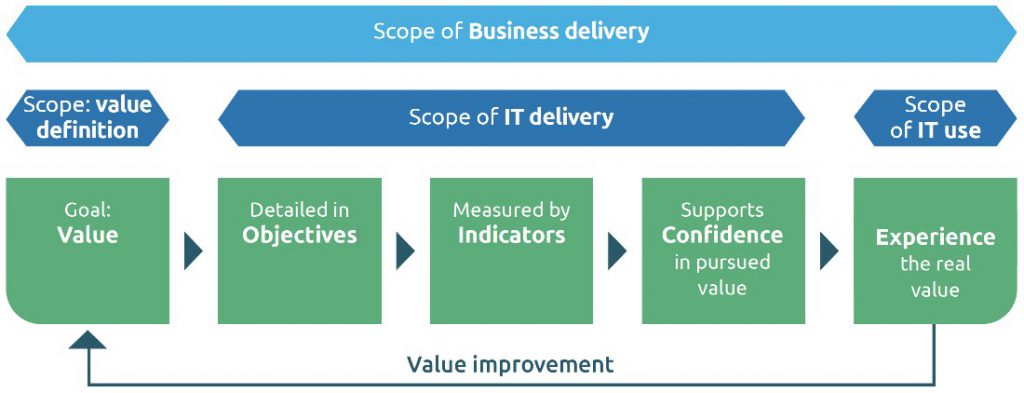The book “Quality for DevOps teams” and the renewed TMAP body of knowledge support all people involved in IT delivery, to deliver business value using IT systems that are at the right quality level.
In this blog you will learn how the new VOICE model supports teams to achieve this.
Today’s organizations expect that their IT systems will enable them to generate business value. This business value may be financial but can just as well be a value in any other quantitative or qualitative way. To be able to specify the pursued value, people in the organization will detail their objectives. These objectives must be measurable to some extent. Therefore, indicators define a way to gain insight into specific objectives. Measuring these indicators is done by quality and value measuring activities, such as testing. This measuring results in information that the people involved use to form an opinion and determine to what extent they are confident that the pursued value can be achieved. After they make the decision to use the IT system, the organization will experience the real value. This experience is used to further improve the value for the organization in a next iteration of delivery.
This process of business delivery, and the IT delivery as part of it, is visualized in the VOICE model. This is a generic model, relevant for all kinds of IT delivery lifecycles that support business delivery (see figure).

VOICE is an acronym of Value, Objectives, Indicators, Confidence and Experience, terms that together describe how to implement delivery of business value.
High-performance IT delivery teams (such as in DevOps) use the VOICE model as a foundation to structure and organize their work. In these teams one of the many task-groups is quality engineering. Our new book “Quality for DevOps teams” will support you in organizing and performing the quality engineering tasks within your high-performance IT delivery team, irrespective of whether you see yourself as a developer, an operations person, a business analyst, a systems architect, a tester, a product owner, a coach, a manager or whatever other role or function.
While the VOICE model concerns supplying information, DevOps is about creating IT systems. The VOICE model therefore supports gathering information about IT systems during the time these are created and maintained. Continuous quality assurance and testing are essential to supply vital feedback to all people involved and to promote achieving valuable IT systems.
The team uses the objectives and indicators (as described in the VOICE model) to determine which activities they need to perform at what point in time. Aligned with their IT delivery model the team will plan their work and supply information to the stakeholders so that the stakeholders can establish their feeling of confidence that the pursued business value will be attainable.
Of course, the VOICE model can be applied to other IT delivery models as well (such as sequential and hybrid IT delivery), but that is outside the scope of this blog.
The new TMAP body of knowledge and the book “Quality for DevOps teams”
are launched on Tuesday 17 March 2020 in Utrecht, the Netherlands.
The TMAP body of knowledge is freely accessible on www.tmap.net.
The book is available in hardcover and ePub versions on www.ict-books.com.
For TMAP training courses please go to academy.sogeti.nl
Would you like to know more? Don’t hesitate to contact me.

 English | EN
English | EN